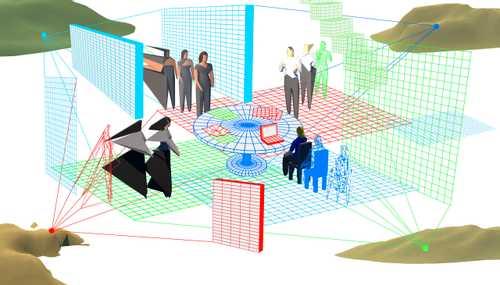Why Remote Work Is So Hard—and How It Can Be Fixed
Curated from: newyorker.com
Ideas, facts & insights covering these topics:
10 ideas
·5.16K reads
18
Explore the World's Best Ideas
Join today and uncover 100+ curated journeys from 50+ topics. Unlock access to our mobile app with extensive features.
How Remote Work Became Possible
- Computers and the internet have made remote work a common arrangement, and this is a recent phenomenon. PC and internet access changed the shape of work in an unimaginable way, and the technical advances of the 90s, which was the Information Technology revolution, offices started using networked PCs and embraced e-mail.
- As the millennium happened, broadband access became cheaper, and a cheap audio communication software was released in 2003, which was called Skype, which evolved into video conferencing later, helping people connect professionally in a remote setting.
115
820 reads
Slow Adoption of Flexible Work
Today, remote and flexible work arrangements are seen as a perk.
In 2018, a survey showed that around 3% of Americans worked from home on a regular basis. Due to technological advancements (starting with Blackberry), employees were working from everywhere, the subway, the café, home and during the commute.
But even after we have the technology required for remote working for about fifteen odd years, we have been slow to adopt mainstream remote working. The mass-adoption needed a catalyst, and that was provided in 2020 in the form of a deadly disease.
112
519 reads
Remote Work During The Pandemic
- The 2020 pandemic has shown that all remote working is possible, and bosses are no longer reluctant towards it, a forced change due to the present conditions.
- Many global giants like Google and Twitter have embraced remote work in a big way, in their bid to protect worker health and to reduce corporate liability.
- The unpredictable nature of the pandemic and an expectation of the second wave of infections can hamper any chance to return to offices.
108
470 reads
Missing Face-To-Face Interactions
While remote work has a lot of benefits like reduced commute, time efficiency and safety, many conclude that the richness of in-person interaction is irreplaceable, and many studies do seem to confirm that people in the office just get more done.
Face-to-face interactions help employees communicate and bond, making them think, investigate, synthesize, write, plan, organize and brainstorm together, something the best of technology finds hard to match with people in remote locations in their pyjamas.
122
463 reads
The Faceless Employee
In many remote working environments, employees are reduced to their email addresses and/or slack handles, delegated with work which can easily overload them due to the current unstable situation across the world already complicating life, and most people having their kids at home.
Offices, on the other hand, have the advantage of the personal touch, with long back and forth emails are usually avoided, with a spontaneous conversation working out well.
115
435 reads
IT Sector and Remote Work
The software industry is already organized towards a systematic work approach that is compatible with remote working, which involves agile project management systems and coding sprints, understanding the needs of the coders.
118
675 reads
The Office As The Center Of Human Interactions
Modern city life has placed the office as a place where adults interact, hang out, and work together, getting into friendships and relationships in the process.
These benefits of an office, where our emotional needs are being fulfilled, are being deprived by the concept of remote working.
112
346 reads
The New Remote Worker
The new remote worker may find that there is unnecessary demand for his attention and attendance, bordering on intrusive, while he is trying to work remotely.
A good way to handle this is to consolidate your appointments in the second half of a day, and provide yourself a set of hours for actual productive work (known as flow). Constant email back and forth all day won't be productive.
123
369 reads
Time Blocking
Assigning your work in specific blocks of time adds structure to your work routine and get more done during a day, as you would be knowing that another task is time-blocked, and the current tasks need to be done in the stipulated time.
136
605 reads
Organizational Innovations
Good collaborative softwares like Trello, Microsoft Flow and others, make tasks appear in a more transparent manner.
Apart from software, how an employee is managed remotely by a boss also matters. The best way is to provide employees with clear goals and then leave them alone to use their own approach and creativity, while being available in case of any query.
118
463 reads
IDEAS CURATED BY
“No one can whistle a symphony. It takes a whole orchestra to play it.” - one of my favourite quotes about teasm, by Luccock
Tucker 's ideas are part of this journey:
Learn more about teamwork with this collection
How to ask open-ended questions
How to avoid awkward silences
How to show interest in others
Related collections
Similar ideas
4 ideas
Hard Work Isn’t the Point of the Office
theatlantic.com
3 ideas
Read & Learn
20x Faster
without
deepstash
with
deepstash
with
deepstash
Personalized microlearning
—
100+ Learning Journeys
—
Access to 200,000+ ideas
—
Access to the mobile app
—
Unlimited idea saving
—
—
Unlimited history
—
—
Unlimited listening to ideas
—
—
Downloading & offline access
—
—
Supercharge your mind with one idea per day
Enter your email and spend 1 minute every day to learn something new.
I agree to receive email updates

